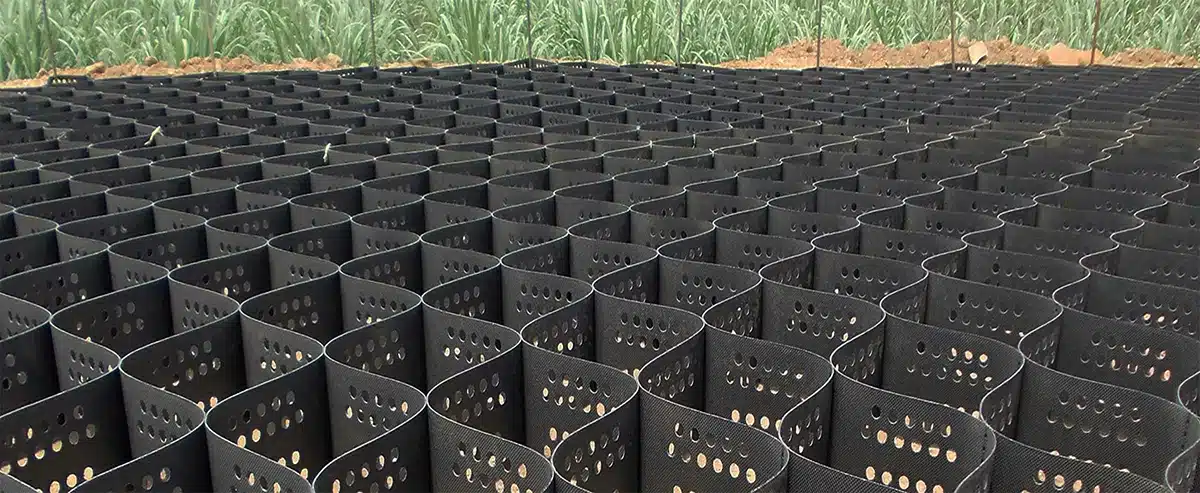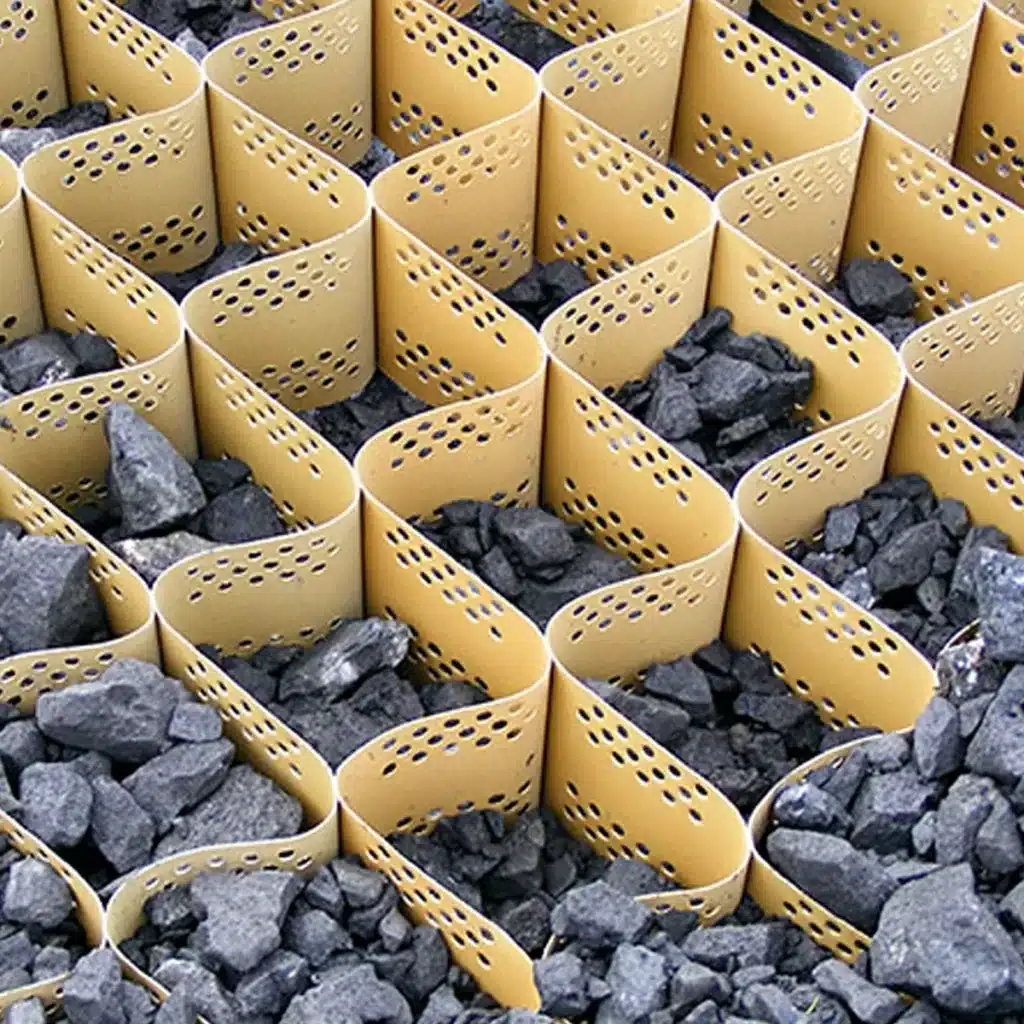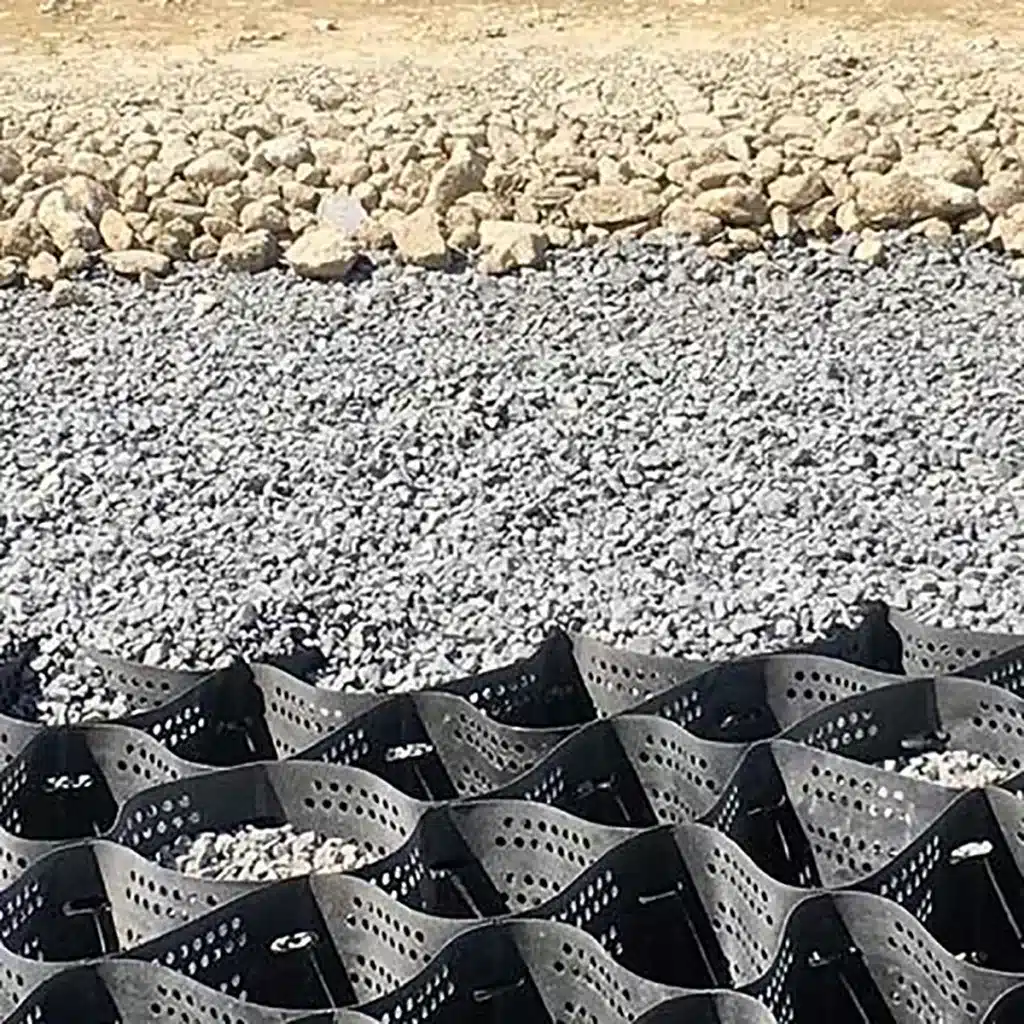+86-159 9860 6917
info@geofantex.com
geofantex@gmail.com
+86-400-8266163-44899
Grass seed erosion control is a crucial aspect of landscape management and environmental conservation. One innovative solution that enhances the effectiveness of grass seeding in preventing erosion is the use of Geocell technology. Geocells are three-dimensional, honeycomb-like structures made from durable materials like polyethylene and used to stabilize soil and support vegetation growth. This article explores how Geocells are employed in erosion control, particularly with grass seeds, and answers common questions about their application in slope protection and soil stabilization.
What is Geocell in Slope Protection?
In slope protection, a Geocell acts as a physical barrier to soil displacement, which is employed to protect slopes from erosion and assist in stabilizing the surface. The cellular confinement system effectively holds the soil in place, which allows grass seeds to germinate and root more effectively, thereby stabilizing the slope. This technology is especially useful on steep slopes where soil erosion is a major concern and traditional methods such as simple seeding may fail.

What is the use of Geocell for soil stabilization and soil erosion countermeasures?
Geocell is primarily used to stabilize soil and prevent erosion by confining and reinforcing the soil within its cellular network, which increases the strength and load distribution properties of the subgrade. As a countermeasure against soil erosion, particularly in areas prone to water runoff and wind, Geocells help maintain soil integrity, allowing for successful grass seed growth and vegetation development. This process not only stabilizes the soil but also enhances the ecological environment, promoting better water absorption and nutrient cycling.
What is the Difference Between Geogrid and Geocell?
While both Geogrid and GeoCell are used in geotechnical applications, they function differently. Geogrids are flat, grid-like structures that provide tensile reinforcement to soil by distributing loads over a larger area. Geocells, on the other hand, are three-dimensional and work by confining materials within each cell to provide structural support and stability. Additionally, geocells are more suited for soft subgrades than geogrids, making them generally more effective in three-dimensional soil stabilization and better suited for uneven and sloped terrain.
Does Geocell Work?
Yes, Geocell technology has been proven effective in numerous studies and practical applications worldwide. It excels in providing structural stability, promoting vegetation growth, and reducing erosion in a variety of settings, from road embankments to riverbanks and hillsides. Additionally, it serves as an effective way to retain earth and water, further enhancing its utility in environmental management. The success of Geocell installations largely depends on proper installation and the quality of the material used.
Geocell technology is a powerful tool in the fight against soil erosion, particularly when combined with grass seed for erosion control. Its unique structure allows for the effective stabilization of slopes and embankments, promoting healthy vegetation growth and reducing environmental impact. With increasing concerns over soil degradation and erosion, Geocell represents a sustainable and effective solution for landscape management and environmental conservation. As the technology evolves, its applications in erosion control and beyond are likely to expand, offering new possibilities for sustainable development.



Get Free Sample
We’ll respond as soon as possible(within 12 hours)






















